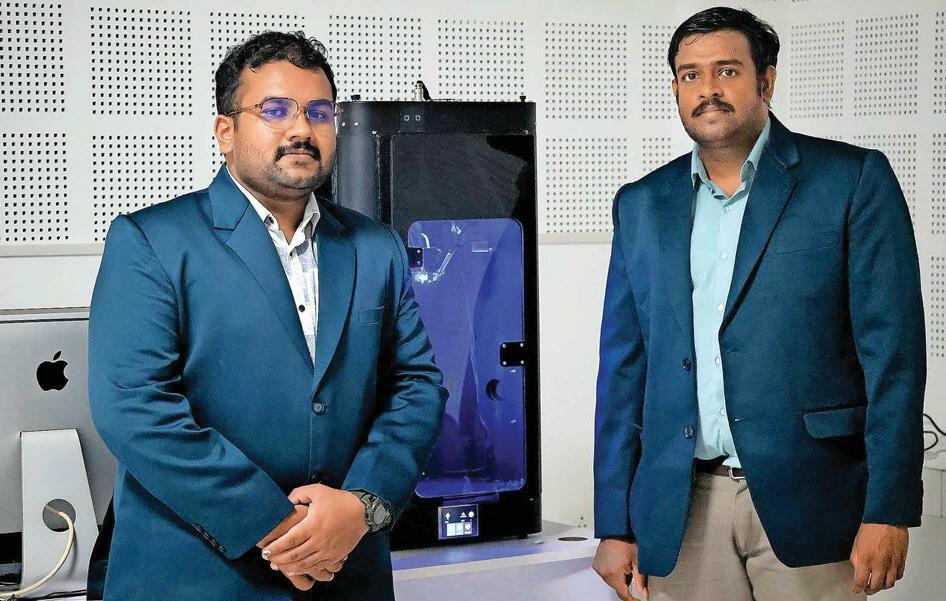
In India, professions are often compartmentalised, with doctors and dentists primarily seen as healers. Defying this norm are Dr Adersh G.A., assistant professor at the department of surgery at PMS Dental College in Thiruvananthapuram, and Shivadhath R.P., a house surgeon at the same college. Their passion extends beyond traditional dentistry, to innovating and crafting novel medical solutions. Together, they have pioneered the world’s first clinical 3D bone graft printer, OsseoCraft, which is poised to revolutionise bone reconstructive surgery globally.
“Bone reconstruction for cases of bone loss typically involves the use of material like titanium and certain plastics. But they just provided support for existing bone or tissue, rather than fostering bone regeneration,” says Adersh, who co-founded the startup Pionomed Biogenix with Shivadhath. “Unlike these conventional options, the material we employ possesses unique properties that stimulate bone growth. It is osseo-conductive, which means it attracts bone formation. Consequently, when these particles are implanted in the body, bone forms around them, making this product unique.”
Moreover, this 3D-printed graft significantly reduces operative time compared to traditional methods like bone harvesting from other parts of the body. “For example, in cases of accidents or cancer surgeries resulting in bone loss, traditional approaches necessitate complex microvascular surgeries to transplant bone from elsewhere in the body,” says Adersh.
This story is from the August 04, 2024 edition of THE WEEK India.
Start your 7-day Magzter GOLD free trial to access thousands of curated premium stories, and 9,000+ magazines and newspapers.
Already a subscriber ? Sign In
This story is from the August 04, 2024 edition of THE WEEK India.
Start your 7-day Magzter GOLD free trial to access thousands of curated premium stories, and 9,000+ magazines and newspapers.
Already a subscriber? Sign In
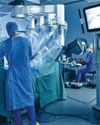
Efficiency and innovation
As health care evolves, professionals must employ innovative methods to refine their skills
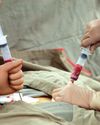
Level up
Only 30 per cent of needy patients are able to undergo transplant in India; we need more dedicated transplant centres
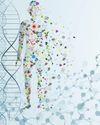
HOPE STEMS FROM A CELL
While stem cell therapies have shown success in treating blood disorders, orthopaedic ailments, autoimmune diseases and eye issues, there is hope that they can one day treat patients with heart disease, blindness, Parkinson's, HIV, diabetes and spinal cord injuries
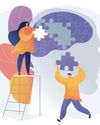
Mind matters
Your mindset can limit or expand your physical ability

Cutting edge
Would you go under the knife if a robot was the one holding it? Or would you say, \"No way, I need a human touch\"? You might have to decide soon because a robot that can imitate skilled human surgeons is already here.
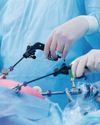
The smallest cut
Minimally invasive surgeries have a bright future, with virtual reality and 3D procedures offering greater precision and AI on the horizon
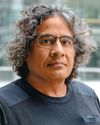
Signalling a revolution
Canadian scientist and entrepreneur Sachdev Sidhu is focused on bringing cutting-edge antibody engineering to his country of origin

Wellness on demand
Starting as a doctor-patient chat platform, Medibuddy has evolved to be India's largest on-demand, full-stack digital health care platform

HEARING AND VISION LOSS LINKED TO HEART DISEASE AND STROKE
A CHINESE STUDY PUBLISHED IN THE JOURNAL of the American Heart Association suggests that middle aged and older adults with sensory impairments, specifically hearing and vision loss, have an elevated risk of cardiovascular diseases, including stroke and heart attacks.

PETTICOAT CANCER AND THE SARI LINK
TYING YOUR UNDERSKIRT (petticoat) tightly around the waist when wearing a sari, can lead to \"petticoat cancer\" or \"sari cancer,\" as it was previously called. Tying the underskirt too tightly can cause constant cord friction that can lead to chronic inflammation, skin ulceration and, in rare cases, skin cancer.